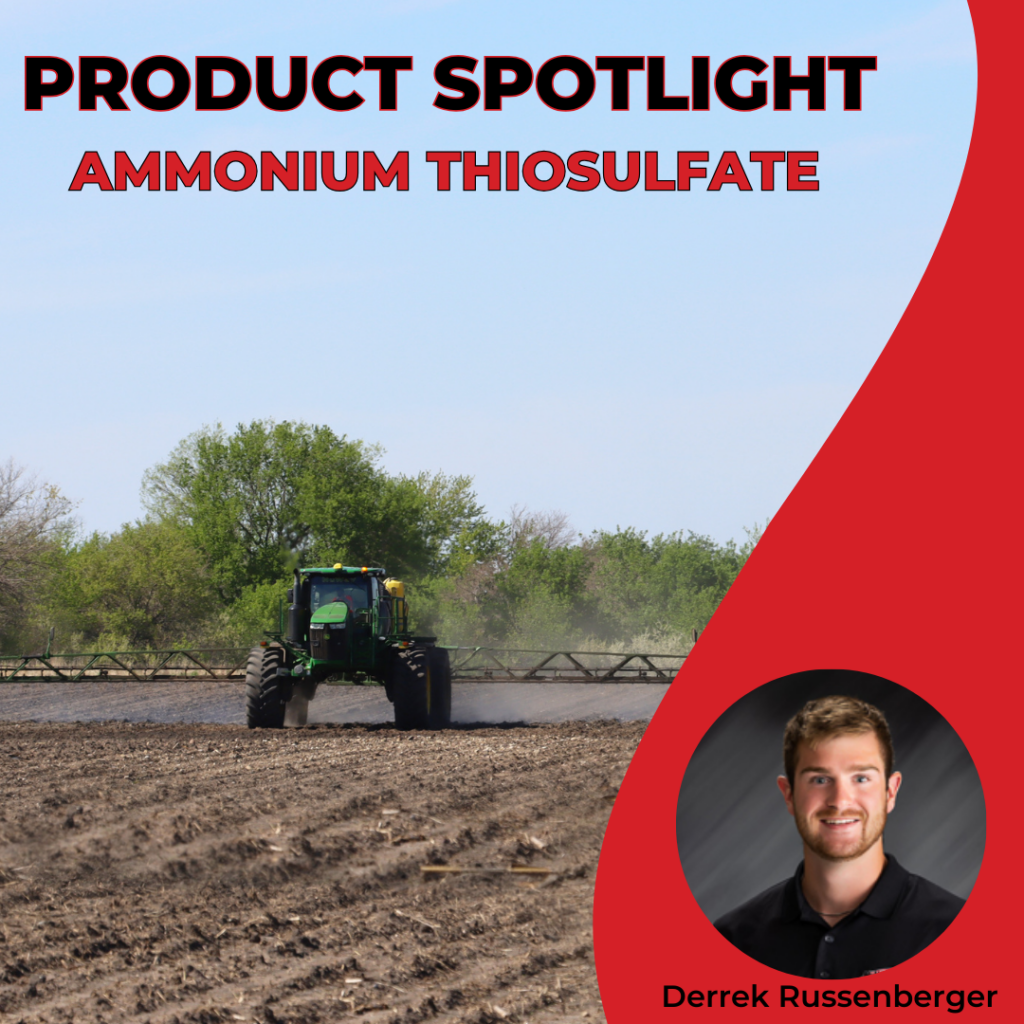In our Product Spotlight series, each account manager will talk about a product they like to use and recommend to their customer base. For our first spotlight, we will hear from, Derrek Russenberger who is an Agronomy Account Manager.
Ammonium Thiosulfate is a liquid fertilizer sulfur source that is primarily applied on corn acres. I like to recommend (ATS) because of the ease of implementation and supplementation with the use of other sulfur sources, and the breakdown of its sulfur. The three main sources of sulfur that we apply to our crops are elemental sulfur, ATS, and AMS (ammonium sulfate). Elemental sulfur is a dry fertilizer sulfur source. Elemental sulfur is 100% in elemental form, meaning it has to be converted into the sulfate form by soil bacteria to become plant-available. A good rule of thumb is elemental sulfur breaks down over a three-year period. AMS is another dry fertilizer sulfur source but differs from elemental sulfur in the sulfur form. AMS is completely in the sulfate form. This means that the sulfur is plant available when the fertilizer hits the soil, but in the sulfate form, the sulfur is also exposed to leaching in the soil with heavy rainfall events as it is mobile in the soil. ATS is a liquid fertilizer sulfur source that is composed of two different sulfur forms. The sulfur in ATS is 50% elemental sulfur and 50% sulfate sulfur. This means that a percentage of the sulfur is plant available to use right away while half of the sulfur needs to be broken down by soil bacteria before it can be used by the plant. This composition makeup of sulfur also means that only half the sulfur content can be prone to leaching in the soil with heavy rain events.
Application
ATS is primarily applied pre-plant/pre-emerge along with the V5-V10 growth stage in corn. ATS can be sprayed alone pre-plant/pre-emerge, applied with your planter on top of the soil (not in furrow!), and applied via Y-drop. ATS can be mixed with UAN 32-0-0 (32%) and used with your spring pre-chemical. ATS should not be applied in-furrow as it could become toxic to the seed and have adverse effects on germination. With the change in diesel fuel to ultra-low sulfur, we have decreased the amount of sulfur we receive from rainfall, and we have had to supplement with synthetic fertilizer sources to equate to the sulfur accumulation we have lost.
For more information about different sulfur sources for your individual operation, reach out to your NuWay-K&H Agronomy Account Manager.


